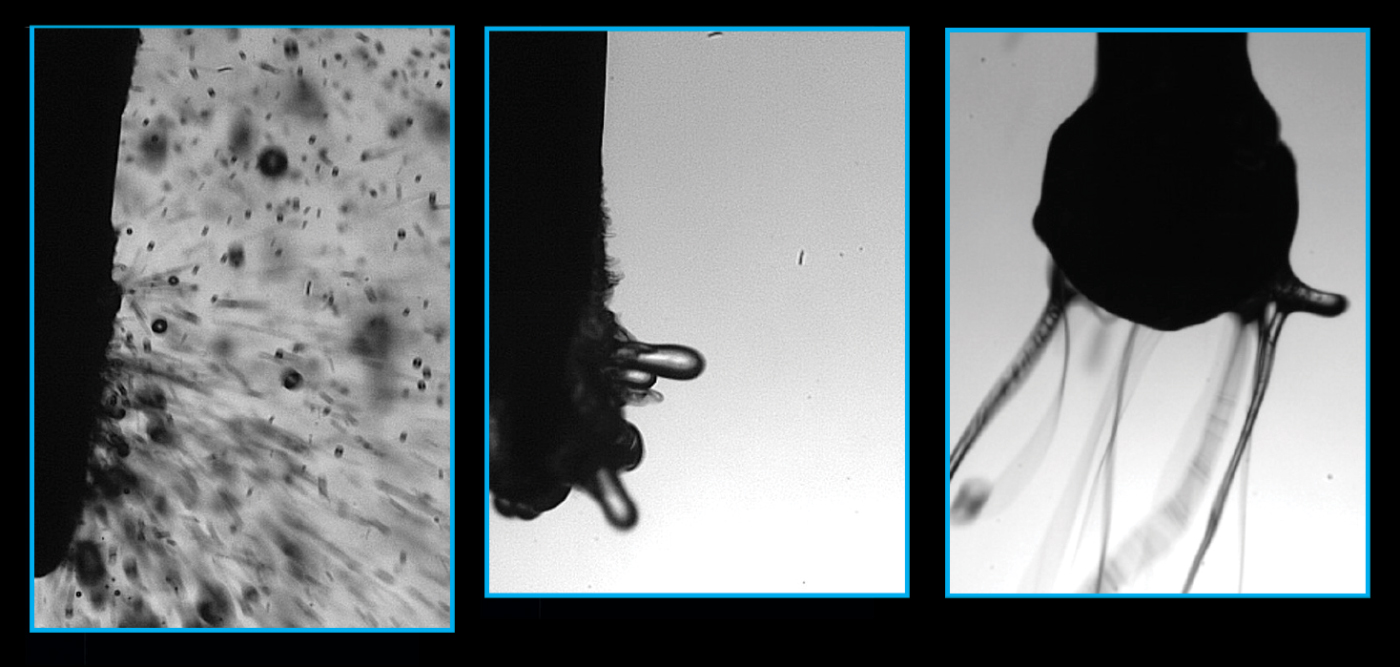No Droplets From Drills
By Fenella Saunders
Dental procedures create aerosols, which can spread viruses, but polymers suppress the process.
Dental procedures create aerosols, which can spread viruses, but polymers suppress the process.

Recently I had my first dental checkup since the start of the COVID-19 pandemic, and I had to sign a waiver about aerosols that are formed during procedures. Numerous studies have linked poor dental hygiene with serious health concerns, including heart disease, so I had to balance the risks. Although no COVID-19 transmissions have been linked to dental procedures, and dentists are using protective measures, there’s mounting evidence that aerosols carry SARS-CoV-2. My dentist’s office isn’t alone in their concern. “Dentistry is one of the most dangerous sources of aerosols, because of the nature of the equipment they use,” explains Alexander Yarin of the University of Illinois at Chicago. “Aerosolization is inevitable, because liquid is supplied for cooling, cavitation, and lubrication.” Yarin is a physicist who specializes in liquid dynamics, and he collaborated with oral biologists to study droplets from dental instruments. “We showed that there are multiple droplets in the range of 20 or 30 micrometers, which would evaporate before they settle,” he says. “Which means that if they have a charge of viruses or bacteria, these will become fully airborne.”

Image from J. Plog et al., Physics of Fluids 32:083111, with permission of AIP Publishing.
Yarin’s past research with liquids suggested a way to tackle this concern. He and his team made solutions containing a few percent by weight of a polymer that is approved for oral uses, such as toothpaste or artificial saliva, and put them in the water reservoirs of dental instruments. These polymers—for example, xanthan gum or polyacrylic acid—even in such small quantities, suppress water breakup. “You can imagine flexible polymer macromolecules to be filaments that tend to coil,” Yarin explains. “If they are dissolved in liquid, it’s as though you’ve attached a spring to the droplet. The droplet is running away, and the spring is stretching and producing a larger and larger force to pull it back.”

Images from J. Plog et al., Physics of Fluids 32:083111, with permission of AIP Publishing.
The results can be seen in videos (see images above; videos are below) that accompany the paper by Yarin and his colleagues in Physics of Fluids. A water-coated scaling tool normally releases a “volcano of droplets,” as Yarin puts it, but with the added polymer, the tool instead produces a flowing stream of liquid tendrils, which can be suctioned away without any droplets forming in the air. These tendrils, says Yarin, are “like the snake-hair of Medusa; they’re moving back and forth, but nothing is detaching, because the elastic forces pull back.”
Yarin and his team have a provisional patent filing and hope that soon it might be standard for dentists to fill the water reservoirs of their tools with such a solution. I know that my dentist certainly was interested.
Click "American Scientist" to access home page
American Scientist Comments and Discussion
To discuss our articles or comment on them, please share them and tag American Scientist on social media platforms. Here are links to our profiles on Twitter, Facebook, and LinkedIn.
If we re-share your post, we will moderate comments/discussion following our comments policy.